Introduction
In today’s world, communities are constantly evolving, and with this evolution comes the need for flexible, adaptable, and cost-effective solutions to meet the diverse social, cultural, and economic needs of local populations. One of the most pressing challenges faced by many communities, particularly in rapidly growing urban areas or remote regions, is the creation of multipurpose facilities that can serve as gathering spaces, event halls, and community centers. Traditional construction methods can be time-consuming, expensive, and often do not offer the flexibility needed to respond to changing community dynamics.
In response to this challenge, community groups around the world are partnering with Lida Group, a global leader in prefabricated building solutions, to supply movable community facilities by converting surplus freight boxes into functional halls. These halls are designed with demountable insulated wall panels, offering a unique blend of durability, mobility, and adaptability. By repurposing surplus freight boxes—steel shipping containers that have outlived their original use—Lida Group provides a sustainable, cost-efficient solution that meets the needs of communities seeking versatile spaces for a variety of purposes.
This article will explore the growing trend of community groups partnering with Lida Group to create movable community facilities, the technology behind the conversion of surplus freight boxes, and the advantages of using demountable insulated wall panels. Additionally, we will examine the social, economic, and environmental benefits of these facilities, highlight real-world case studies, and discuss the potential for further innovation and expansion in this field.
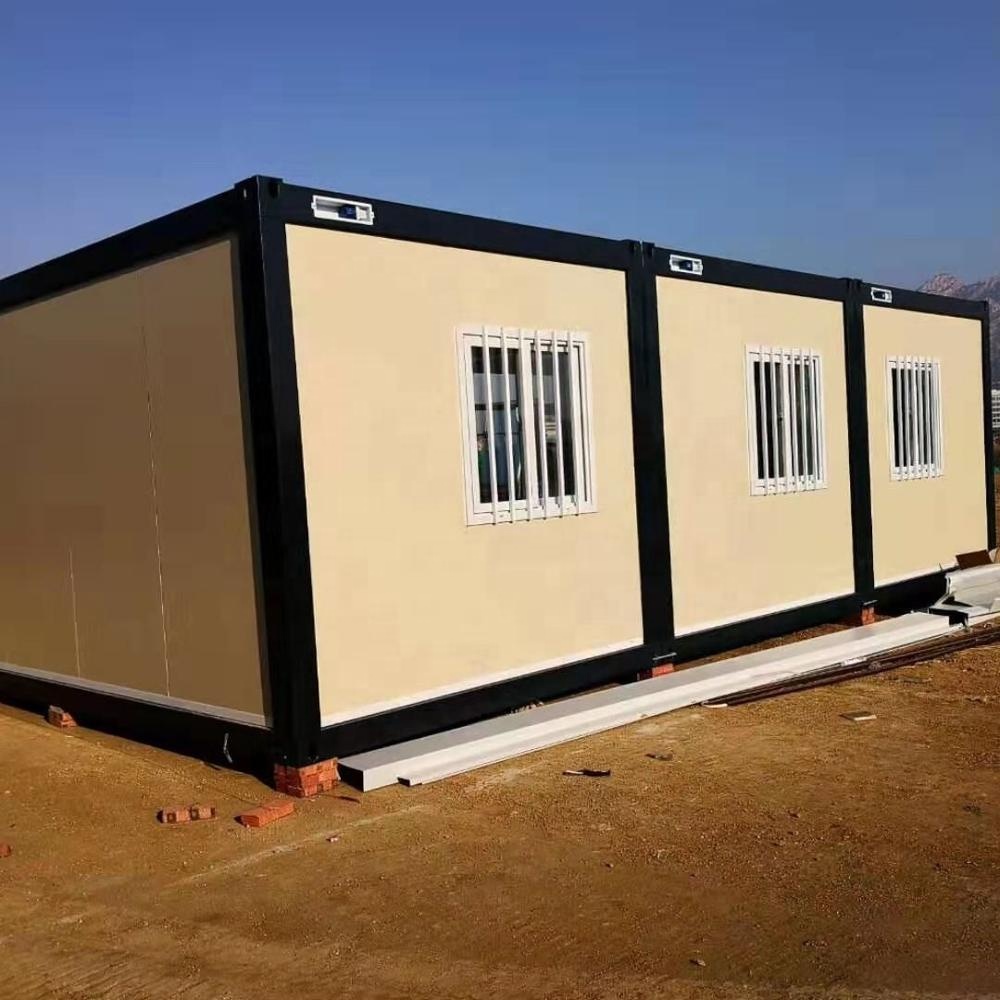
The Need for Movable Community Facilities
Communities require spaces where people can gather, share ideas, celebrate, and engage in activities that promote social cohesion and well-being. Whether it’s a community hall for local events, a meeting space for organizations, or a temporary facility for disaster relief or emergency services, the need for versatile and accessible buildings is universal. However, traditional brick-and-mortar construction is often too slow, expensive, or rigid to meet the growing and changing needs of modern communities.
Movable community facilities offer a solution to these challenges. These facilities can be transported, assembled, and disassembled with ease, allowing communities to adapt to population changes, economic shifts, and other factors that influence the demand for public spaces. By using surplus freight boxes—strong, weather-resistant shipping containers—as the structural foundation for these facilities, Lida Group has created a solution that is both practical and sustainable.
The use of demountable insulated wall panels adds another layer of flexibility, allowing these buildings to be quickly modified, expanded, or relocated as needed. This capability is particularly valuable for communities that face fluctuating demand for space, such as during seasonal events, emergencies, or population booms. Moreover, these facilities can be designed to serve a variety of functions, from event halls and classrooms to health clinics and temporary shelters, making them an essential part of any community’s infrastructure.
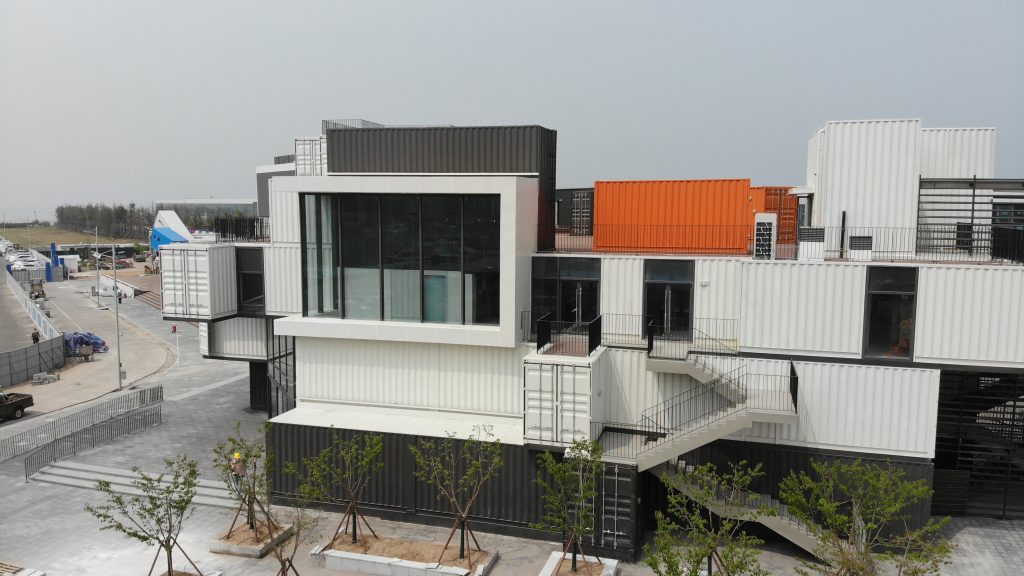
Lida Group: A Leader in Movable Facility Solutions
Lida Group has earned a global reputation for its innovative approach to prefabricated buildings, modular structures, and portable facilities. With extensive experience in designing and manufacturing containerized solutions for a wide range of industries—including construction, military, education, and disaster relief—Lida Group has become a trusted partner for community organizations seeking practical and sustainable building solutions.
One of the key strengths of Lida Group’s approach is its ability to repurpose surplus freight boxes, which are often left unused or discarded after their initial shipping life. These steel containers are designed to withstand the harsh conditions of international shipping, making them extremely durable and weather-resistant. By converting these containers into movable community facilities, Lida Group is not only providing a cost-effective solution but also promoting sustainability by reducing waste and reusing valuable materials.
Lida Group’s demountable insulated wall panels further enhance the functionality of these spaces. These panels are designed to provide thermal insulation, soundproofing, and easy assembly, allowing the facilities to be adapted for different climates and purposes. The panels can be quickly removed or replaced, making it easy to modify the layout or expand the size of the facility as needed.
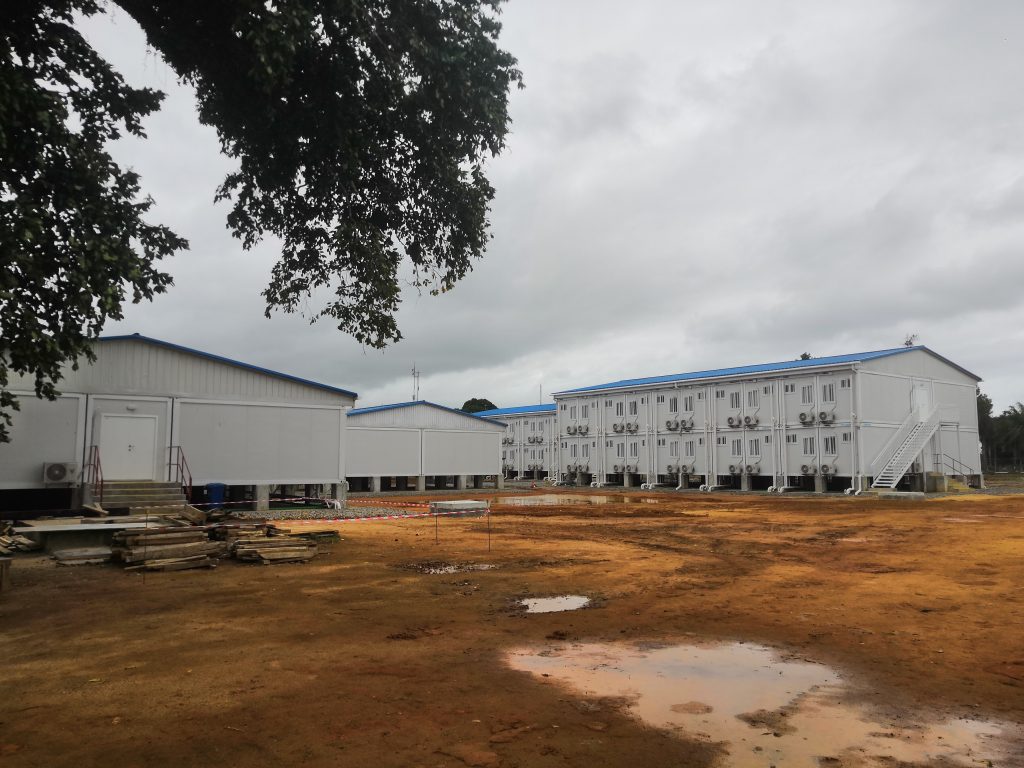
Surplus Freight Boxes: The Foundation of Movable Community Facilities
At the heart of Lida Group’s movable community facilities are surplus freight boxes, also known as shipping containers. These containers are made of steel and are typically used to transport goods across the world by sea, rail, or road. After a certain number of years in service, many of these containers are retired from active shipping use, even though they retain their structural integrity. Rather than allowing these containers to sit unused or be scrapped, Lida Group repurposes them into valuable community facilities.
1. Durability and Weather Resistance
Shipping containers are specifically engineered to endure the stresses of long-distance transportation and extreme weather conditions. This makes them ideal for creating durable, weather-resistant community facilities that can be deployed in various environments, from urban centers to rural or coastal areas. The steel construction of the containers ensures that they can withstand high winds, heavy rain, and even snow, providing a safe and secure space for community members.
The inherent strength of the shipping containers also means that they require minimal maintenance over time, reducing the long-term costs for communities that use them. Whether the facility is being used for a few months or several years, the containers provide a reliable and stable structure that can handle continued use and exposure to the elements.
2. Portability and Ease of Transport
One of the most significant advantages of using surplus freight boxes as the foundation for movable community facilities is their portability. Shipping containers are designed to be easily transported by trucks, trains, or ships, making it easy to move the facilities between locations as needed. This is especially beneficial for community groups that may need to relocate their facilities due to changing population dynamics, seasonal events, or emergency situations.
For example, a community in a flood-prone area might need to temporarily relocate its event hall or emergency shelter to higher ground during the rainy season. With Lida Group’s movable facilities, this can be done quickly and efficiently, ensuring that the community always has access to the space it needs, regardless of the circumstances.
3. Modularity and Customization
Shipping containers are inherently modular, meaning they can be easily combined or stacked to create larger or more complex structures. This flexibility allows Lida Group to customize the layout of the community facilities based on the specific needs of each group. For example, multiple containers can be connected to create a large event hall, while smaller containers can be used to create separate rooms for offices, classrooms, or storage areas.
The modular design also allows for easy expansion or reconfiguration of the facility. If a community’s needs change over time—such as an increase in population or a shift in the types of services required—the facility can be modified or expanded by adding more containers or rearranging the existing ones.
4. Cost-Effectiveness
Compared to traditional construction methods, using surplus freight boxes to create community facilities is a more cost-effective solution. Shipping containers are readily available and relatively inexpensive, especially when compared to the costs of building new structures from scratch. Additionally, the modular design and ease of transport reduce the time and labor required to set up or relocate the facility, further lowering costs.
For community groups with limited budgets, Lida Group’s movable facilities provide an affordable option for creating versatile, high-quality spaces that can be used for a wide range of purposes. The containers can also be rented or leased, offering even greater flexibility for communities that may only need the facilities for a short period of time.
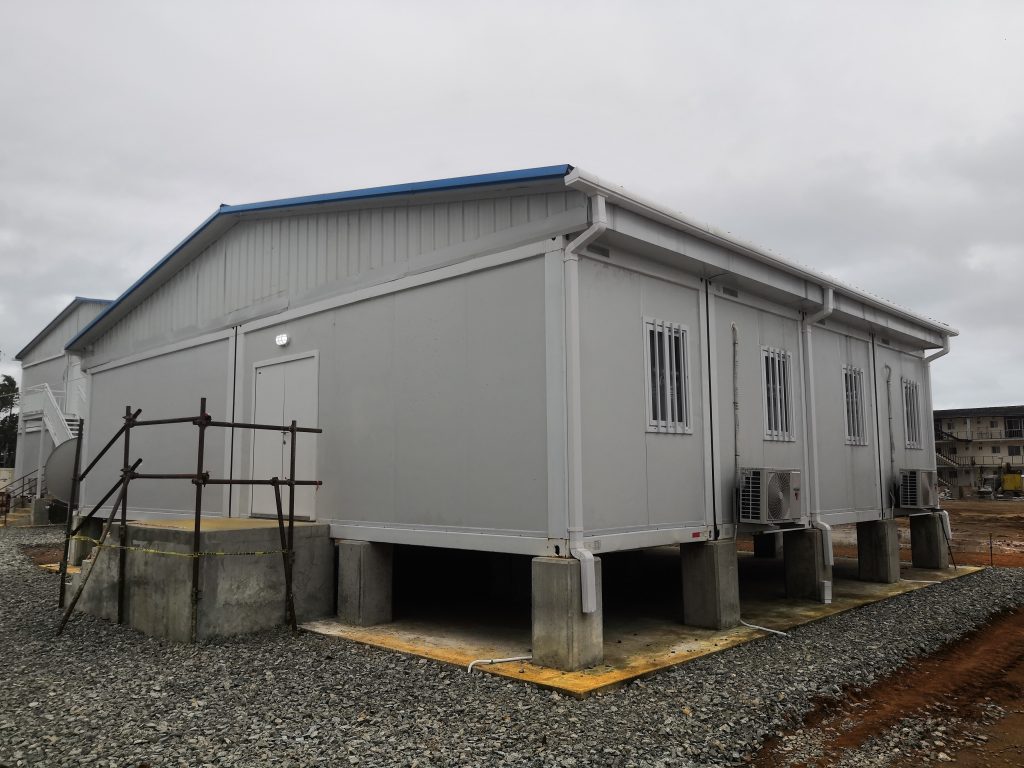
Demountable Insulated Wall Panels: Enhancing Functionality and Comfort
While surplus freight boxes provide the structural foundation for Lida Group’s movable community facilities, the addition of demountable insulated wall panels is what transforms these containers into comfortable, functional spaces suitable for a variety of uses. These panels offer several key benefits, including thermal insulation, soundproofing, and easy installation, making them an essential component of any community facility.
1. Thermal Insulation for Climate Control
One of the primary functions of the demountable insulated wall panels is to provide thermal insulation. Steel shipping containers, while strong and durable, can conduct heat and cold, making the interior uncomfortable in extreme temperatures. The insulated panels help regulate the temperature inside the facility, keeping it cool in hot climates and warm in cold environments. This ensures that community members can use the facility comfortably, regardless of the weather outside.
Effective thermal insulation is particularly important for community facilities that will be used year-round or in regions with extreme weather conditions. The insulation provided by the panels reduces the need for energy-intensive heating or cooling systems, lowering operational costs and making the facility more environmentally friendly.
2. Soundproofing for Noise Control
In addition to providing thermal insulation, the demountable panels also offer soundproofing, helping to create a quieter and more peaceful environment inside the facility. This is especially important for community halls that will be used for events, meetings, or educational purposes, where excessive noise could disrupt activities or make communication difficult.
The soundproofing capabilities of the panels are also beneficial in urban areas, where external noise from traffic, construction, or other sources can be a distraction. By reducing noise levels inside the facility, the panels contribute to a more comfortable and productive environment for community members.
3. Quick and Easy Installation
The demountable nature of the insulated wall panels makes them incredibly easy to install and remove. The panels are designed to fit seamlessly onto the shipping containers, and they can be snapped or fastened into place without the need for specialized tools or labor. This simplifies the process of setting up or dismantling the facility, allowing community groups to quickly adapt the space to meet their needs.
For example, a community may need to expand its event hall for a large gathering or modify the layout to create separate rooms for different activities. With demountable panels, these changes can be made quickly and efficiently, minimizing disruption to the community’s activities.
4. Improved Aesthetic Appeal
While steel shipping containers are known for their durability, they may not always offer the most aesthetically pleasing appearance. The demountable insulated panels help improve the visual appeal of the facility by covering the industrial look of the container with a more refined and attractive finish. Lida Group offers a variety of finishes and color options for the panels, allowing community groups to create a space that is both functional and visually appealing.
This flexibility in design ensures that the facility can be customized to reflect the community’s identity or blend in with the surrounding environment. Whether the facility is being used as a community hall, classroom, or health clinic, the panels help create a welcoming and professional appearance that enhances the overall experience for users.
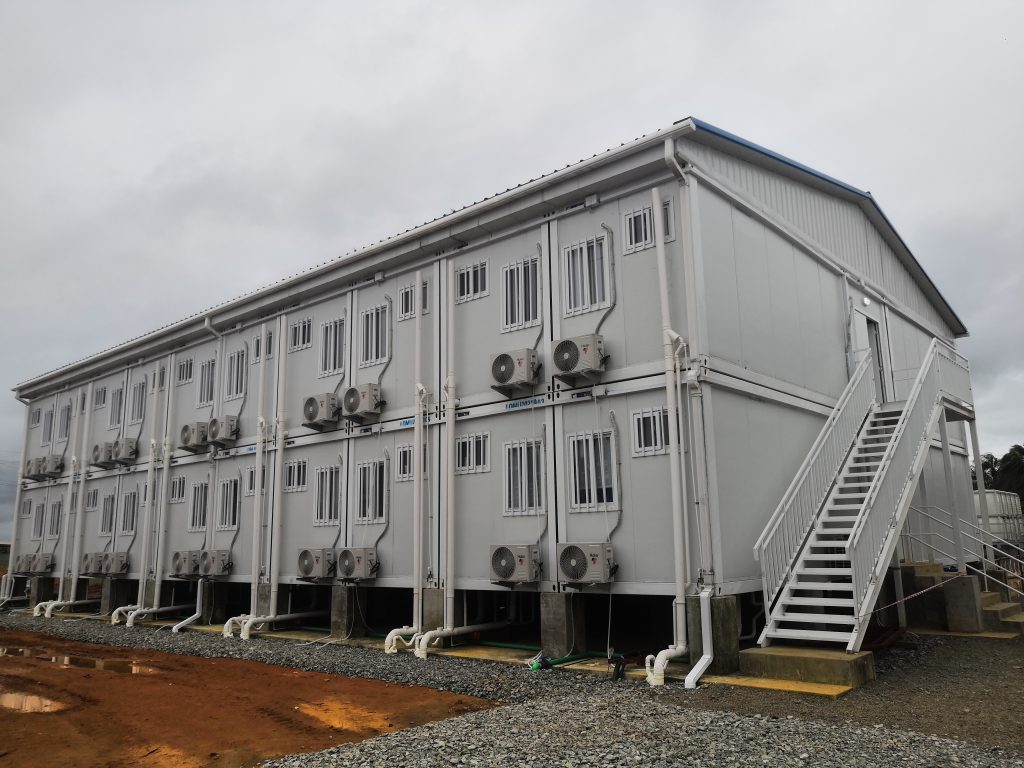
Customization and Flexibility: Adapting Facilities to Community Needs
Every community is unique, and the facilities needed to serve the local population can vary widely depending on factors such as size, location, and cultural practices. Lida Group’s movable community facilities are designed with flexibility in mind, allowing them to be adapted and customized to meet the specific needs of each group.
1. Modular Design for Scalability
One of the key advantages of Lida Group’s movable facilities is their modular design, which allows for scalability. Community groups can start with a single container and expand the facility as needed by adding additional containers or panels. This is particularly useful for communities that may experience population growth or increased demand for services over time.
For example, a small community may initially require only a single container to serve as a meeting space or classroom. As the community grows, the facility can be expanded by adding more containers to create additional rooms or larger gathering areas. This scalability ensures that the facility can continue to meet the needs of the community as it evolves.
2. Interior Customization
Lida Group offers a wide range of interior customization options for the movable community facilities, allowing groups to create spaces that are tailored to their specific needs. The interior of each container can be outfitted with seating, tables, storage units, and other furnishings to accommodate different activities and functions.
For example, a community hall may need flexible seating arrangements for events such as weddings, meetings, or performances. A classroom may require desks, whiteboards, and storage for educational materials. By offering customizable interiors, Lida Group ensures that the facility can be adapted to serve a variety of purposes, making it a valuable resource for the community.
3. Eco-Friendly Features
As sustainability becomes an increasingly important consideration for communities, Lida Group’s movable facilities can be outfitted with eco-friendly features to reduce their environmental impact. For example, solar panels can be installed on the roof of the containers to provide renewable energy for lighting and climate control, reducing the need for non-renewable energy sources.
Additionally, the insulated wall panels help reduce energy consumption by maintaining a comfortable internal temperature without the need for excessive heating or cooling. Other eco-friendly features, such as rainwater harvesting systems or composting toilets, can also be incorporated into the design to further enhance the sustainability of the facility.
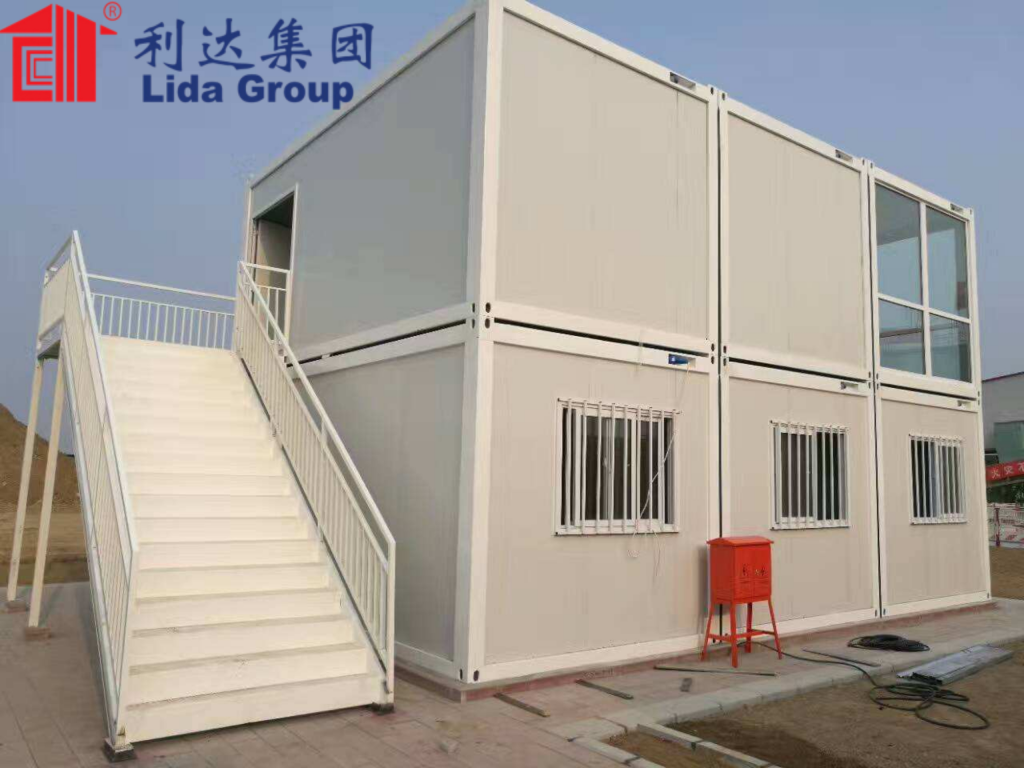
Social, Economic, and Environmental Benefits of Movable Community Facilities
The use of movable community facilities offers a wide range of benefits for both the communities that use them and the environment. These benefits go beyond simply providing a functional space—they also contribute to social cohesion, economic development, and environmental sustainability.
1. Social Benefits
Movable community facilities play a crucial role in fostering social cohesion by providing a space where people can come together, share experiences, and engage in activities that promote a sense of belonging. Whether it’s a cultural event, a community meeting, or a recreational activity, these facilities help strengthen the bonds between community members and create a sense of pride and ownership in the shared space.
In addition, the flexibility of the facilities allows them to be used for a wide range of purposes, from educational programs and health clinics to emergency shelters and disaster relief centers. This versatility ensures that the facility can serve the community in times of need, providing a safe and secure space for people to gather, receive services, and support one another.
2. Economic Benefits
The cost-effectiveness of Lida Group’s movable facilities makes them an attractive option for communities with limited financial resources. By repurposing surplus freight boxes and using modular, prefabricated components, Lida Group is able to offer high-quality facilities at a fraction of the cost of traditional construction methods. This allows community groups to allocate their resources more effectively, investing in other important services and initiatives.
Moreover, the ability to quickly set up, dismantle, and relocate the facilities offers significant economic benefits for communities that experience seasonal or temporary fluctuations in demand for space. For example, a community may need additional event space during a festival or peak tourist season but may not require the facility year-round. With Lida Group’s movable facilities, the community can rent or lease the space for as long as it’s needed, saving money on construction and maintenance costs.
3. Environmental Benefits
Repurposing surplus freight boxes as community facilities offers significant environmental benefits by reducing waste and promoting the reuse of materials. Shipping containers are often discarded after their shipping life ends, contributing to the growing problem of industrial waste. By converting these containers into functional buildings, Lida Group is helping to reduce the environmental impact of shipping and construction industries.
In addition, the use of insulated wall panels and other energy-efficient features helps reduce the facility’s overall energy consumption, making it a more sustainable option for communities. The incorporation of renewable energy sources, such as solar panels, further enhances the facility’s environmental performance, reducing its carbon footprint and reliance on non-renewable energy.
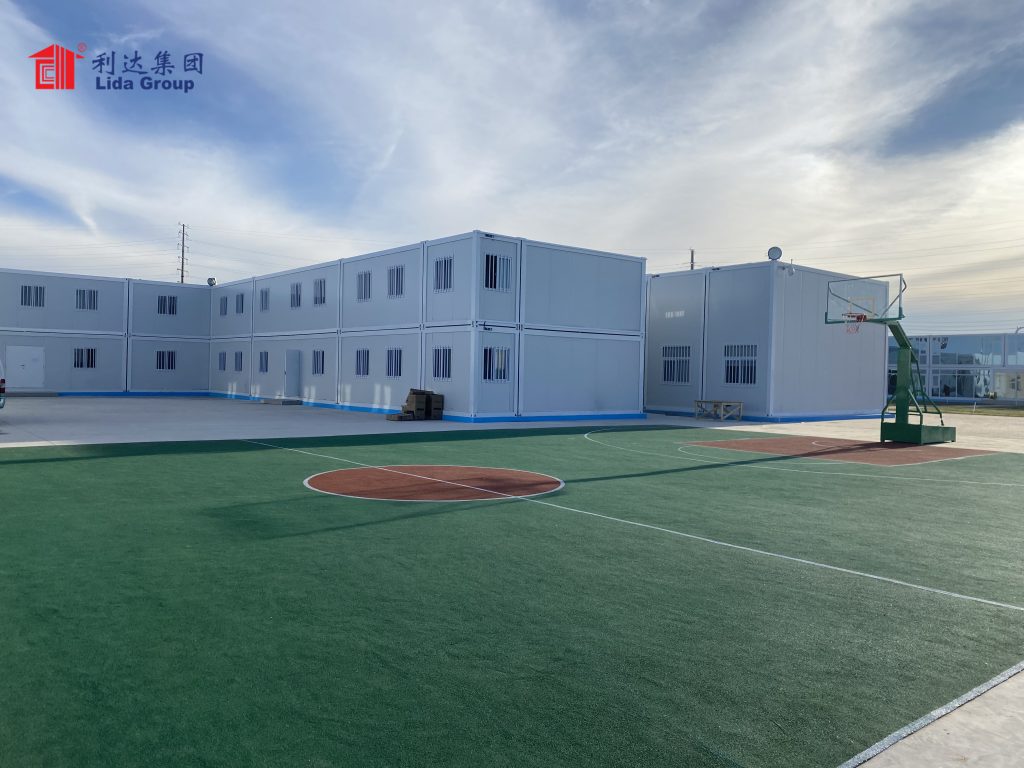
Real-World Applications: Lida Group’s Movable Community Facilities in Action
To better understand the benefits of Lida Group’s movable community facilities, let’s explore a few real-world examples of how these facilities have been successfully implemented in communities around the world.
Case Study 1: Movable Event Halls for Rural Communities
In a rural region of Southeast Asia, several small villages were in need of a shared space where they could hold cultural events, meetings, and educational programs. However, the cost of building a permanent community center was prohibitive, and the villages lacked the resources to maintain a large facility year-round.
Lida Group provided a solution by supplying movable event halls made from surplus freight boxes. The containers were outfitted with demountable insulated wall panels, providing thermal insulation and soundproofing to create a comfortable environment for gatherings. The modular design of the facility allowed the villages to expand the hall as needed, with additional containers being added for large events or busy seasons.
The movable nature of the facility also allowed the villages to share the space, with the hall being relocated between different villages depending on the calendar of events. This flexibility helped the villages maximize the use of the facility while minimizing costs, making it a valuable resource for the entire region.
Case Study 2: Temporary Health Clinics in Disaster-Stricken Regions
Following a major earthquake in a coastal region, local health infrastructure was severely damaged, leaving many communities without access to medical care. Humanitarian organizations needed a quick and effective solution to provide temporary health clinics for the affected population.
Lida Group partnered with several NGOs to supply movable health clinics made from repurposed shipping containers. The containers were equipped with insulated wall panels to maintain a stable internal temperature, as well as medical equipment and supplies to support basic healthcare services. The clinics were transported to the disaster zone by truck and quickly set up in areas where access to medical care was most needed.
The mobility of the clinics allowed humanitarian organizations to move them to different locations as the needs of the population changed, ensuring that medical services were always available where they were most needed. The success of the project demonstrated the value of Lida Group’s movable facilities in disaster response and recovery efforts.
Case Study 3: Pop-Up Learning Centers in Urban Areas
In a rapidly growing urban area, a local education organization was struggling to find space to hold after-school programs and adult education classes. Traditional classrooms were too expensive to rent, and the organization needed a flexible solution that could be easily adapted to different neighborhoods.
Lida Group provided movable learning centers made from surplus freight boxes. The containers were customized with seating, whiteboards, and storage for educational materials, and the insulated wall panels helped create a comfortable learning environment. The centers were set up in different neighborhoods based on demand, allowing the organization to reach a larger number of students without the need for permanent facilities.
The success of the pop-up learning centers demonstrated how Lida Group’s movable facilities could be used to support educational initiatives in urban areas, providing a flexible and cost-effective solution for communities in need of additional learning spaces.
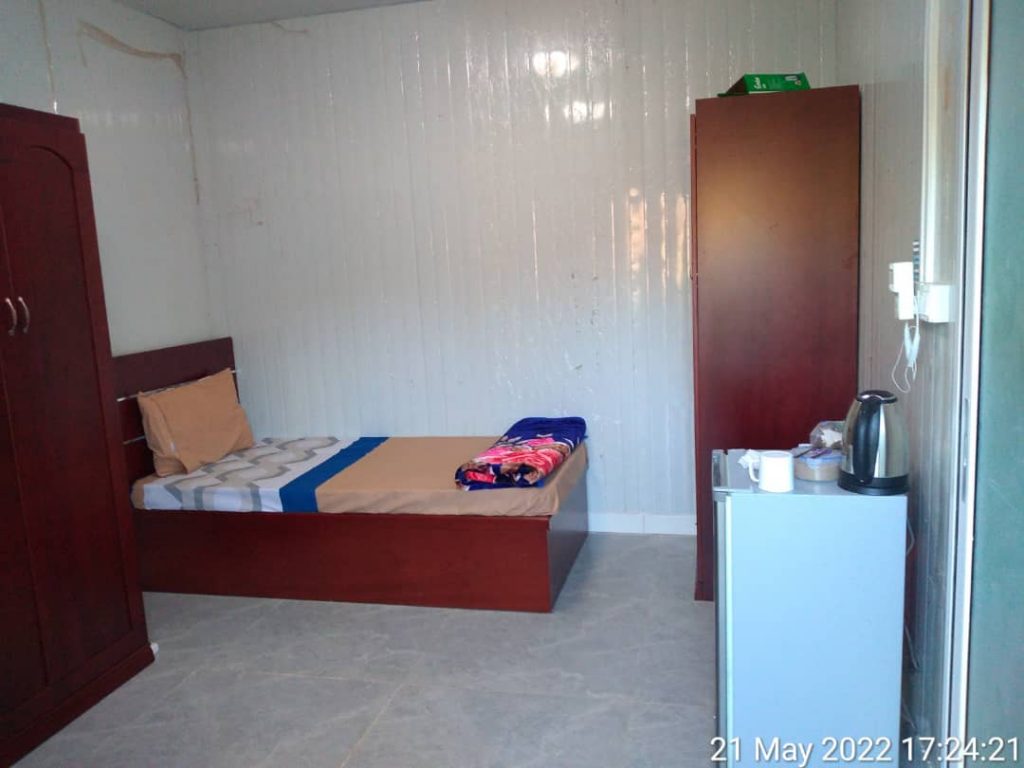
Conclusion: The Future of Movable Community Facilities
As communities continue to grow and change, the need for flexible, adaptable, and cost-effective facilities will only increase. Lida Group’s innovative approach to creating movable community facilities by converting surplus freight boxes into functional halls with demountable insulated wall panels offers a practical solution to this challenge. These facilities provide communities with the versatility, durability, and sustainability they need to create spaces that can be used for a wide range of purposes, from cultural events and meetings to health clinics and classrooms.
The use of surplus freight boxes not only reduces waste and promotes environmental sustainability but also provides a cost-effective alternative to traditional construction methods. The addition of demountable insulated wall panels enhances the functionality and comfort of the facilities, ensuring that they can be used year-round in a variety of climates and settings.
In conclusion, Lida Group’s movable community facilities are poised to play a significant role in the future of community development, providing groups with the tools and infrastructure they need to create vibrant, inclusive spaces that promote social cohesion, economic development, and environmental sustainability. As more communities recognize the benefits of these facilities, the potential for further innovation and expansion in this field is limitless.

Related news
-
Municipalities approach Lida Group to quickly deploy emergency transitional shelters at community scale via movable low-cost housing adapted from decommissioned freight containers.
2024-11-07 17:42:05
-
Remote mine site contracts Lida Group to deliver complete prefabricated modular camps featuring foundationless sandwich panel dormitories, kitchens and amenities for fly-in workers.
2024-10-30 14:27:49
-
Aid group commissions mobile prefabricated housing systems from Lida Group featuring hurricane-proof composite panel shelters and sanitation units for rapid deployment to disaster sites.
2024-10-30 17:40:03
contact us
- Tel: +86-532-88966982
- Whatsapp: +86-13793209022
- E-mail: sales@lidajituan.com


